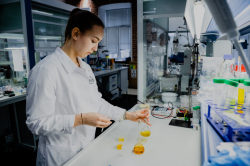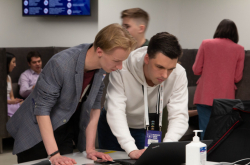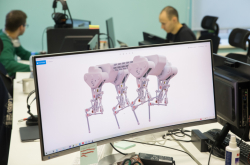Contents
- Key aspects of the program
- Program curriculum
- Career opportunities
- Potential applicants
- Enrollment opportunities
Photonics is the new electronics
Having rapidly developed for several decades, now the growth of semiconductor electronics is slowing down. This is due to the fact that transistors that power all electronics devices have reached the physical limits of their capacity, they have nearly reached the size of single atoms. Recently, even the fundamental speed limit of optoelectronic and electronic transistors has been discovered: it can’t exceed one petahertz because of the physical limits connected to the interaction of electromagnetic waves and electrons. It’s almost impossible to keep making transistors smaller, which has a significant impact on their performance.
One possible solution is turning to photonics, a field that focuses on information transfer via photons in dielectric structures – as opposed to electrons in metal ones. These days, optical devices are taking the place of many electronic ones.
In 2020, the company Lightmatter announced their photonic chip for AI that uses light to compute and transfer information. This technology produces less heat and thus consumes less energy – plus, it significantly enhances the chip’s performance.
An ITMO student with a quantum communications system. Photo by Dmitry Grigoryev, ITMO.NEWS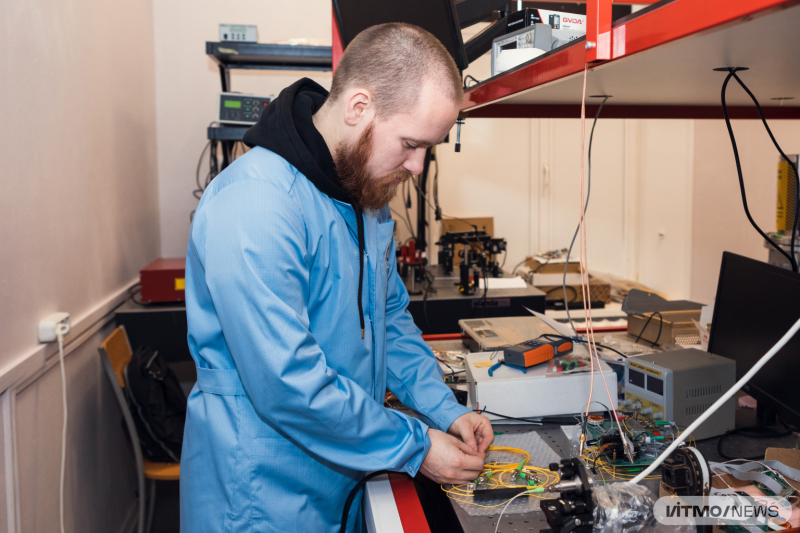
Recently, Oxford University researchers have developed the first photonic processor that uses light polarization. As using light increases information storage density, it also makes it possible to store more data and conduct more efficient computations.
In the future, these technologies will help create a photonic computer made entirely from optical elements. To make it possible, researchers now have to develop new optical methods of information transfer, storage, and processing, as well as study the existing ones. Thise will be used for many applied tasks: studying quantum optics, art, new materials, and more.
For instance, the now developing 6G wireless communication networks rely on terahertz radiation. On the other hand, infrared, ultraviolet, and X-ray radiation reveals layers in a painting, making it possible to see the first pencil sketches or hidden inscriptions from the artist. One such method allowed conservators from the National Galleries of Scotland to discover a hidden Van Gogh self-portrait on the back side of his painting, Head of a Peasant. The new Master’s program launching at ITMO will train specialists who will be able to contribute to all of these fields.
Researchers from the Research and Educational Center for Photonics and Optoinformatics. Photo by Dmitry Grigoryev, ITMO.NEWS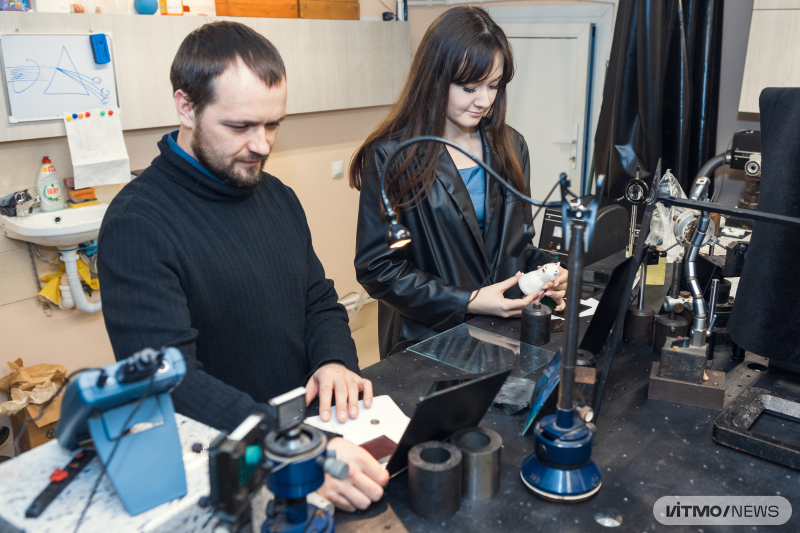
Program curriculum
The stand-alone feature of the program is that it brings together four fields within photonics, most of which have been developing at ITMO for 40 years, while some, like art photonics, were created at the university’s Research and Educational Center for Photonics and Optoinformatics.
Within the first semester, students at the program will learn the foundations of quantum technologies, optical information transfer, storage, and processing, as well as optical materials, femtosecond and terahertz technologies. After that, they will be able to choose one out of four specializations:
- Photonics Materials, the only specialization in Russia that will train specialists in optical materials and technologies. The curriculum will include all aspects, from developing new materials to designing next-gen photonic elements and devices.
- Art Photonics. Within this specialization, students will learn to work with optical methods to analyze works of art, including spectroscopy that helps evaluate the chemical composition of paints and canvases, and terahertz visualization that looks into the structure of analyzed objects.
- Quantum Communications. Students in this specialization will train on a device developed with support from Russian Railways, which involves actual equipment from a backbone network. Practical training will be conducted at Russian Railways and SMARTS-Quanttelecom. This specialization is a part of the roadmap for the development of quantum communications.
- Superfast Photonics. Students within this specialization at the intersection of femtosecond and quantum optics will learn the technological aspects of quantum communications for secure data transfer. Moreover, students will study new ways of information transfer and processing in the optical and terahertz ranges that can be applied in 6G communications, defect detection, and non-destructive control systems.
A researcher from the Research and Educational Center for Photonics and Optoinformaticsby a holographic setup. Photo by Dmitry Grigoryev, ITMO.NEWS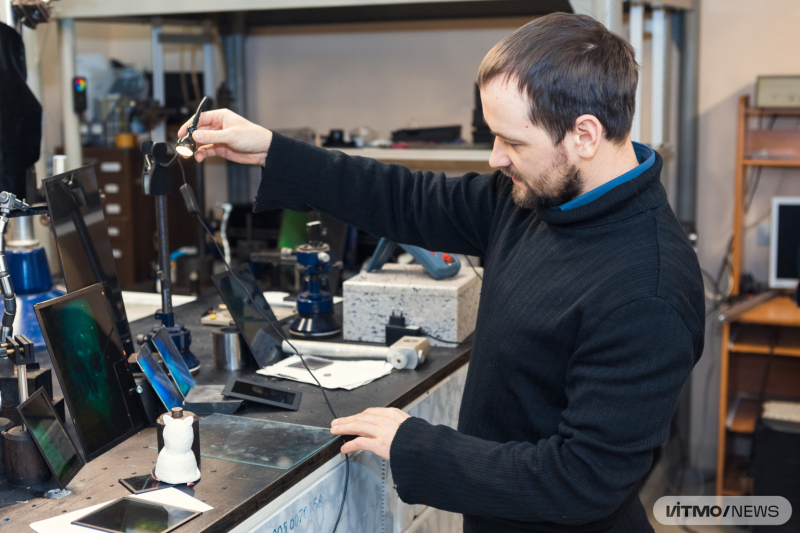
See also:
How Russian and French Researchers are Helping to Restore Classic Art
Heritage Science at ITMO: Collaboration With Russian Museum and French Colleagues
Career opportunities
One of the main trajectories for graduates is a career in science. Moreover, having completed their training, students will be able to find positions at JSC Electropribor, Kometa, Krypten, JSC SMARTS-Quanttelecom, Russian Railways, etc.
Graduates will be qualified to be researchers, service engineers, administrators at the centers of management and monitoring, administrators of backbone network traffic, research engineers, design engineers, specialists in museum software, database developers, and software developers.
Potential applicants
The program is aimed at students with a background in optical technologies and physical optics.
An ITMO student with a quantum communications system. Photo by Dmitry Grigoryev, ITMO.NEWS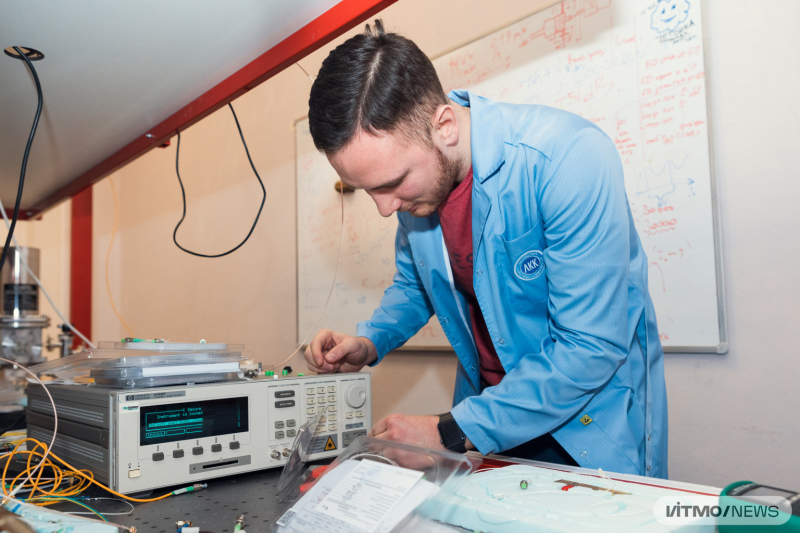
Enrollment opportunities
Prospective students can enroll in one of the following ways:
- Entrance exam;
- ITMO’s Portfolio contest;
- ITMO’s MegaContest;
- I Am a Professional contest;
- Congress of Young Scientists;
- Science Needs You contest;
- A letter of recommendation from the head of the program.



